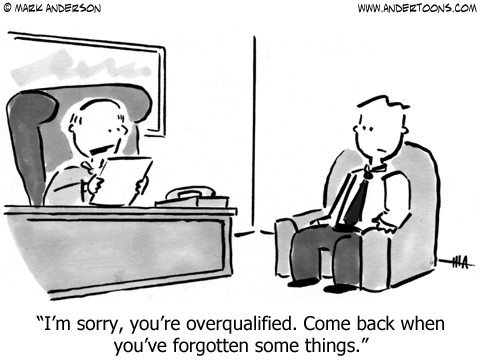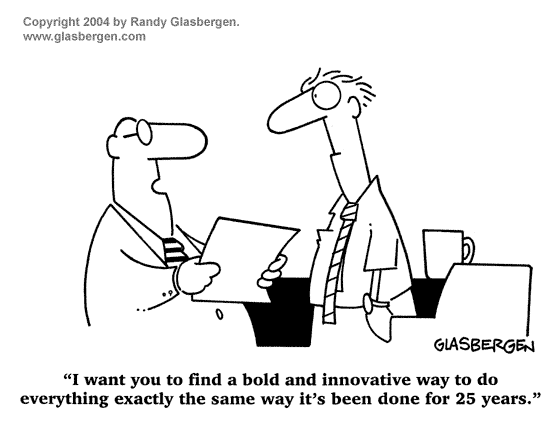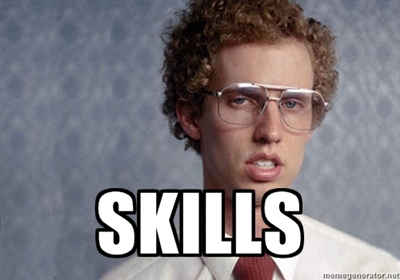
Thought-leadership creates credibility, visibility, and brand loyalty. It’s a powerful tool in helping entrepreneurs grow their businesses.
I recently reconnected with Denise Brosseau whose new book will be coming out in January 2014. It’s called Ready to be a Thought Leader? How to Increase Your Influence, Impact, and Success. As a co-founder of Springboard’s first venture capital conference for women entrepreneurs and founder of the Forum for Women Entrepreneurs, she has seen how thought leadership has paved the way for her own success and that of others.
If you earn a reputation as a thought leader, journalists, analysts and conference producers will seek you out and want to put you in the spotlight. If you are a thought leader, other respected people in your industry will want to connect with you. These supporters and followers can open doors, which ultimately will grow your businesses.
Brosseau shared with me five reasons why women entrepreneurs should use thought leadership to help build their businesses and she shared stories of women who have used this strategy successfully.
1. Frame the conversation to standout from the crowd.
Miki Agrawal is the owner of Wild (formerly known as SLICE), in New York City, a farm-to-table pizza restaurant. She is lactose-intolerant and finding good-tasting pizza was a challenge. Her pizza is gluten-free and uses mostly vegan ingredients. She has built thought leadership around eating healthy foods that are locally and sustainably grown.
She has partnered with Zappos.com CEO Tony Hsieh to open Wild in Las Vegas. They met through the Summit Series, which hosts events for young entrepreneurs, artists, and activists. Attending conferences and other events is an important way to be seen and meet people.
Agrawal is also co-founder of THINX, which makes leak- and stain-resistant underwear. The underwear is also anti-microbial, moisture-wicking, breathable, and washable. It’s great for accidents and embarrassing moments during that “time of the month.” For every pair of THINX you buy, the company funds the production of seven washable, re-usable cloth pads for a woman or girl in the developing world, who often miss school or work when they have their periods.
Having a cause gets you noticed. The company received the 2013 Tribeca Film Festival’s “Disruptive Innovation Award” and was named 2013’s Forbes’ “Top 20 Millienials On a Mission”. Agrawal has expanded her thought leadership to include women’s empowerment.
Agrawal has written a book, blogs, speaks, and has been written about in the media countless times.
Adrian Ott has a successful consulting practice Exponential Edge. She decided not to follow the same old me-too strategy. She wanted to differentiate herself and build thought leadership. Her differentiation was to develop a point of view regarding Time-Value Economics (Time-onomics). She’s written a book “The 24-Hour Customer” and writes regularly about the new rules for winning in a time-starved, always-connected economy. She is a contributor to Fast Company and HBR, and a prominent speaker. She crafted a message that resonated and it has led to new opportunities for her company.
2. Attract media opportunities.
Kat Gordon, like Ott, has a successful consulting business, Maternal Instinct. She is an advertising creative director with a specialty in marketing to moms. She, too, wanted to separate herself from the pack. Women make 85% of consumer purchase decisions yet 97% of the creative directors at agencies are men. Her goal is make advertising more women-friendly.
To attack the problem, she started The 3% Conference.The first conference earned her a Proclamation from the Commission on the Status of Women at City Hall in San Francisco, designation as one of 2013′s “Top 10 Women to Watch” in Advertising Age, and lots of media coverage including an article in Forbes. The second conference will be held mid October. She has become a sought-after speaker, presenting at Techweek, The Haas School of Business, Walmart, The 140 Conference, Mama Bear Tech Conference, and Mom 2.0 Summit.
Nilofer Merchant has a vision about the future and is willing to advocate for it, which she does regularly in her blog, Explore, and in Harvard Business Review. She, too, runs a successful consulting practice. Her reputation comes from her work with companies like Apple, and Autodesk, and start ups like Golive, which was later bought by Adobe. She has earned the nickname “The Jane Bond of Innovation” because of her ability to guide companies through impossible odds. She has written two business books: 11 Rules for Creating Value in the #SocialEra and The New How. She has contributed to several other books as well.
As a result, she has been featured in The Wall Street Journal among other media. CNBC has called her a visionary. She is a sought after speaker, speaking at gigs including opening for Bono, several TED conferences, keynoting at technology conferences like Web 2.0, and inspiring thousands alongside the likes of Malcolm Gladwell and Simon Sinek.
Merchant has strategically positioned herself to get on public and private boards, which often don’t seek women members.
3. Connect with customers to better understand their needs.
Ali Wing is CEO of giggle, a baby products company for choosy parents. She built the corporate brand around herself as an expert mom who is also a choosy parent. Wing researches baby products to find the best, narrowing parent’s choices so they can spend less time buying stuff and more time with their babies. Research includes talking to new parents to find out what’s important to them.
Wing really understands her customers needs and as a result has become their spokesperson. As the spokesperson for choosy parents, she has appeared on The Martha Stewart Show and is regularly quoted in Real Simple and writes or has written for The Bump, Glam, BabyTalk, Working Mother, and eHow. She was part of USA Today’s CEO Roundtable, and is co-author of The lilaguide: Baby Gear Guide, the Zagat’s of baby gear.
Just as Agrawal has become a spokesperson for healthy eating for people with food intolerance, Wing has become an iconic figure among parents of babies.
4. Attract engaged customers who become brand evangelists.
Stephanie Burns and Jody Greene of Chic CEO provide answers to women who are frustrated by how hard it is to get the answers they want to the questions they have regarding starting a business. They do this through in-person events and an online resources. They meet the informational needs of start-up women entrepreneurs and their need to share and learn from each other.
Chic CEO was rated as one of the Top 10 Entrepreneurial Websites for Women by Forbes.com and one of the Top 10 Best Websites for Millennial Women by Forbes.com.
5. Build both a personal and corporate brand.
All six women entrepreneurs have developed a brand for their business and for themselves. As Wing points out, that personal brand comes with a price. While she loves being front and center with her customers, during off hours she’d love to turn it off and not focus on what she says and how she looks.
Brosseau acknowledges that thought leadership is hard for a small business owner who has limited time and resources. “Thought leadership, even when done right, is time consuming, especially on top of managing the day-to-day operations of a growing business,” she said. “Women entrepreneurs are not always that good at delegating.”
Brosseau offered some tips for women entrepreneurs who are considering the thought leadership path.
- Define up front what success looks like. Is your goal to generate media mentions, drive website traffic, increase blog comments, or grow revenue. It’s easy to get caught up in the glamour and lose track of the real reason you are doing this, which is more customers and more sales.
- Get comfortable with controversy and being the lone voice. If you’re saying what everyone else is saying, you are not a thought leader, you are a thought follower. To be a thought leader, you have to be okay with saying what others won’t say. You need to be thinking three steps ahead … what are the risks that you’ll get it wrong.
- Big ideas are more interesting than little ideas. Robin Chase was challenged to come up with a bigger vision. Zipcar was the result.
- Women are often uncomfortable in the limelight. Spokesperson training can get you past this.
- You’re going to make mistakes. There are ways to handle them; training will help.
Based on her experience and the people she interviewed, Brosseau developed a seven-step process for becoming a thought leader. Her book will be out in January.
LEARN TO BECOME A THOUGHT LEADER!
Thanks to Geri Stengel, Contributor to Forbes Magazine.












